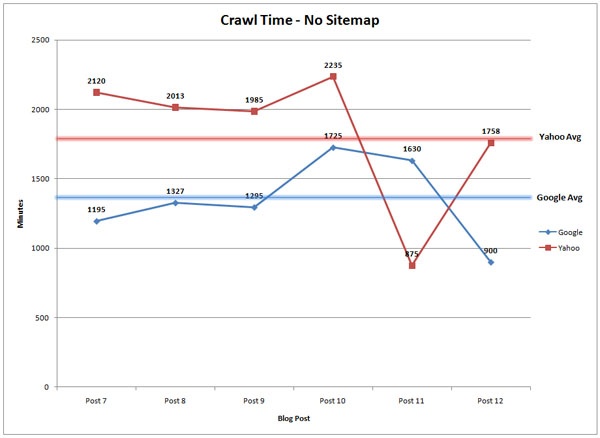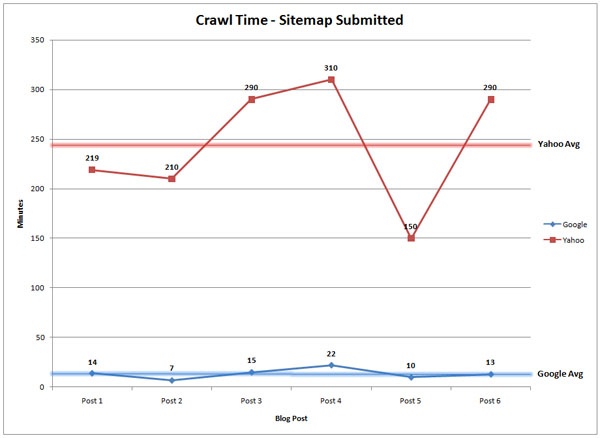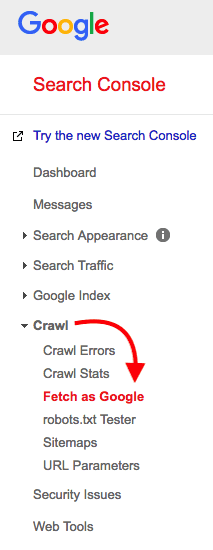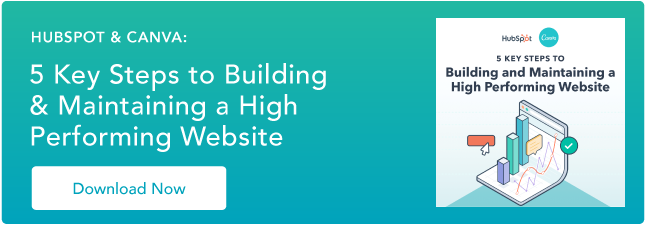How Can I Register My Website With Google
So, you've developed an amazing site. You've put together some seriously valuable content, iterated on the design, and gathered a ton of feedback. Now, you're finally feeling fix to share it with the world. And as before long as you lot publish your new site for the globe to see, all of your content volition immediately showtime showing upwards in Google, right? Well, peradventure. It takes a little more than just striking the publish button. To get your site listed on search results, Google needs to "crawl" and "index" your content. This happens automatically over periods of days or weeks, but if you're a site owner, you can manually submit your site to Google and advance this process. There are two ways to do this. Just first, let'south briefly explore how Google crawls and indexes your website content. Google, in its own words, uses a huge set of computers to crawl billions of pages on the web. This crawler, called the Googlebot, substantially begins with a list of web folio URLs generated from previous crawls and so augments those pages with sitemap data provided within Google Search Panel. During the itch procedure, the Googlebot -- too known every bit a "spider" -- looks for new sites, updates to existing pages, and whatever broken links. If new pages are within your sitemap, Google will discover them and crawl the content and and so potentially list the folio within search results based on its evaluation of 200+ criteria. In one case the crawling process is complete, all of the results are fed into Google's alphabetize, and whatever new sites or updated content will exist listed accordingly. During the processing of results, Google looks at data on your page such as title tags, meta description, alt tags, and more. If you lot accept dynamic content on a page, the Googlebot may not exist able to read information technology and will crawl the default version -- it'due south recommended that your default version is optimized for search. As a outcome of Google's crawling, you may never need to submit your website as it will exist discovered automatically. The downside to this approach has always been that information technology'southward reliant on Google's timeframe to crawl and index your site content, which may not happen equally apace as you would like. Want to check if a item site is listed in Google? Just brainstorm your search with "Site:Sitename.com." For example, here'southward what is displayed in Google for HubSpot.com: If no content is indexed all the same for a site, Google will let you know that your search did not match any results. If no content is found, your next step should be to create a sitemap that can exist submitted to Google. If you want more information about how to create a sitemap, take a look at this post. (HubSpot customers: Your sitemap is automatically generated and maintained. But go to yourdomain.com/sitemap.xml to see information technology.) My former colleague Casey Henry wondered this very question and ran a test to run across how long it took Yahoo! and Google to crawl and index content. The results? Well, they were staggering. When publishing content without manually submitting an updated sitemap, Henry found that it took Google ane,375 minutes to crawl, while Yahoo took 1,773 minutes. To put those numbers into perspective, that'southward roughly a full-twenty-four hour period simply to crawl your content. Source: Moz On the other hand, if yous're launching a new website, or adding a number of new pages to an existing domain, it may be worth submitting an updated sitemap. According to the same study, Henry found that after submitting an updated sitemap, the average time it took for a bot to visit the page was 14 minutes, compared to Yahoo!'s 245 minutes. In other words, your new page can start generating organic traffic and conversions on the same day. Source: Moz To submit your website to Google, y'all can either add an updated sitemap to your Google account, or submit an indexing request for the desired URL through Fetch as Google. Both processes require site owners to annals with Google Search Console. Here are the specifics of each choice: If yous're launching a website for the kickoff time, you should first verify you own the site within Google Search Panel. Then, submit information technology here -- select the "submit a sitemap" option once you lot land on this page. With a web domain already launched, you can still submit new pages for Google to index and rank them appropriately. Anyone used to be able to practice this with a page they wanted crawled, whether they endemic the folio or not. Now, but every bit you would when launching a brand new website, you must be the URL'south owner to ask Google to re-clamber it. If you own a webpage you'd like Google to re-crawl, you can do a few different things: First, you can submit an updated sitemap to ensure it gets listed as quickly as possible. To submit an updated sitemap, log in to Google Search Console and select "Add together a Holding." Once you're there, yous can submit your updated sitemap for Google so it can begin crawling it every bit soon as possible. Fetch as Google allows you to view webpages on your site as Google sees them. As a site owner, you lot can also use this tool to reindex individual URLs once you've fetched them. To practice this, log into Google Search Console and select the property you accept currently listed with Google. Along the lefthand sidebar, select Clamber > Fetch as Google, as shown below: This will pull up a table where you can enter a URL path following your domain name, and "Fetch" this item webpage on your website. See what this looks like below: As you tin can see to a higher place, two sample Fetch requests have been listed below the Fetch bar. The condition of these fetches is "Partial," just once these fetches are complete, Google will assess their eligibility for reindexing. If the URL you've fetched qualifies, you'll see a "Request Indexing" choice announced where the red box is in the screenshot above. Select this option, and Google will begin the process of re-crawling and reindexing this webpage. Equally stated earlier in this article, indexing requests can take anywhere from a day to a couple of weeks to complete. Then, check your Fetch as Google table periodically to see the condition of your active indexing requests. Based on the above instructions, you lot may be wondering if you need to submit an updated sitemap or indexing asking every time y'all publish a new page. If you lot're updating critically important content that y'all'd like Google to recognize apace, you lot certainly could practice so. Merely keep in mind Google as well re-crawls pages on its own, and it'southward ok to let this process piece of work in the groundwork as you regularly create and update your content. 
How Google Finds Your Content

How Long Does Information technology Take for Google to Alphabetize Content?


How Do I Submit My Site to Google?
If yous have a brand new site ...
If you lot have an existing site and are launching new pages ...
Submit an Updated Sitemap


Fetch equally Google




Originally published Jul 30, 2018 8:00:00 PM, updated December 04 2020
Source: https://blog.hubspot.com/marketing/submit-website-google
Posted by: higginsouldou.blogspot.com


0 Response to "How Can I Register My Website With Google"
Post a Comment